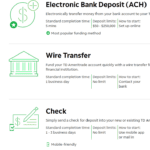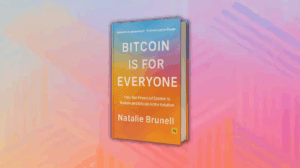You don't have to invest a lot of money or start investing right away. If you already have a good nest egg, you might be interested in ways to increase it. Continue reading to learn how you can invest $100,000 and more.
These are the key factors to consider before you start investing.
Consider your financial situation before you make any investment decisions. Before you invest, make sure you have the answers to these questions.
- Can investing make it more difficult to meet other essential needs? While building wealth for the future can be important, it shouldn't override today's basic needs. Before you invest in any investments, make sure you have enough money to pay your bills and provide for basic needs like shelter and food. A cash reserve fund, such as a savings or checking account, is a good idea. You won't be able to withdraw money from investments right away.
- What impact will investing have on your taxes? In certain cases, such 401ks, investing may reduce your income tax burden. Other cases may see an increase in tax due to earnings from investments. The IRS will eventually come after you for any investment earnings, so make sure you have a plan to cover those expenses.
- Do you need a money manager or financial advisor? While some people are comfortable managing their investments on their own, others prefer to be guided by a professional. An advisor can help you manage the details of investing so that you can live your life. A financial advisor can help you determine which options are best for your goals and financial situation.
- What are your financial goals? And what is the timeframe for achieving them? These are the factors that will determine which investments may be best for you. If you are younger and want to accumulate wealth over time, you may split your investments between high-risk and high-reward options. You might also consider lower-risk accounts that offer a safety net. You might choose to be conservative if you are older and want to increase your retirement savings.
- Are you able to afford to lose any money that you have invested? Know what you can afford. Although some investments are more secure than others, stocks and real estate options don't guarantee a return. There is also the possibility of losing your principal investment. To make sure you have some savings, consult financial advisors and other professionals while you are investing for potential gains.
- Are there any values or missions you would like to help? Many people desire to be involved in socially responsible investment. This could mean investing in companies or organizations that reflect your values so you are supporting the work they do.
9 ways to invest $100,000
You've probably read something about investing or money management. Diversification is a term that describes a portfolio with a variety of assets. This will ensure that your portfolio has a mix of assets that are performing well and those that are not. Here are nine ways to invest $100,000.
1. Retirement accounts like 401ks or IRAs
Qualified retirement accounts allow you to set aside a specific amount each year before taxes, making them a great way to save for your future. Your employer may match the amount you contribute to your 401k if it is sponsored by an employer. This can help you create more wealth in the future, without having to pay any money.
However, you can't lose $100,000 in one year from any of these accounts. 401ks or IRAs are only two options. Deferral limits for 401k plans were increased to $20,500 (or $27,000 if 50 years old and making catch-up contributions). The 2022 IRA contribution limit was $6,000, or $7,000 for catch-up contributions.
2. Stocks to Buy
Individual stocks can be a great investment. This is especially true if you choose a winner and keep it for the long-term. If someone invested $1,000 in Amazon stock back in 2008, they would have stock worth $20,000 in 2018. This is a gain of 2,000%.
While investing some of your money in stable stock can provide long-term growth, it is important to remember that stocks are always risky. You are essentially placing your bet on one company when you purchase stock in that company. Your investment will be affected if the company goes down. When you are looking to purchase stock, do your research and talk with professionals.
3. Invest in mutual funds or exchange-traded funds (ETFs).
ETFs and mutual funds allow you to invest in stocks and bonds, without the need to choose your investments. These funds can be made up of stocks or bonds, and may include a range of investments. These investments are chosen to help balance one another and support overall positive performance.
Although there is no guarantee that a mutual fund will succeed, they are less risky than individual stocks. Because if one stock in the mutual fund basket is not performing well during a season, there may be other stocks that can help to balance it. The manager of your mutual fund will usually handle the stock selections. Although this means you will have to pay management fees, it can give you some peace of mind and allow you to "set-and forget" your investments.
4. Buy Gold and Other Precious Metals
Although gold and other precious metals can be volatile in short-term, they are generally considered to be an investment worth considering since they have historically maintained their value well over the long-term. People use precious metals to balance their investment portfolios because gold tends not to outperform other investments in the economic markets.
There are many ways to invest in gold, silver, and palladium. You can either buy bullion or coins outright or invest in a precious-metals IRA or precious metals ETFs. You should remember that gold is not a magical investment that promises insane returns. This is especially true if you see marketing hype that claims gold to be the answer to all your investment problems. The historical performance of gold (from 1971 to 2019) is comparable to that of U.S. stocks and commodities.
5. Invest in Real Estate
Real estate investments work in a similar way to gold or other options, and can be used as a balance for other investments. There are many options available to you if you want to invest $100k real estate.
The most obvious option is to buy real property. Here are some ideas:
- Flipping a house. It involves buying a house for a reasonable price, renovating it to increase its value and then selling it quickly to make a profit. The best flippers are those who have a good understanding of the local residential real estate market, can make contact with professionals and are able do some home improvements.
- Renting a property you own. A home, duplex or commercial property can be purchased and rented to others. This is typically a long-term strategy for investing as it takes years to recover your initial investment via rents. During that time you will still be receiving rent income.
- Investing in real estate funds. For example, real estate investment trusts (or REITs) are organizations that have a large number of commercial properties that generate income. These trusts can be used to receive dividends. You can also invest in ETFs which combine multiple REITs and other real-estate investments to create more variety.
6. Consider Cryptocurrencies
In recent years, cryptocurrencies have become mainstream investments. While Bitcoin is well-known, you have the option to diversify your investments by using a number of cryptos.
There are many stories about Bitcoin's meteoric rise and how people made a lot of money from it. However, that doesn’t mean you have to take everything out your portfolio and put it in this option. The Bitcoin price index rose almost 33,000% between October 2013 and March 2021. It went from $196 to $58,000. However, as of September 2022 the price index was just below $20,000.
Like any investment, Cryptos can rise and fall. Cryptos can also be unpredictable and volatile, so make sure to carefully consider whether Crypto is right for you before investing.
7. You can also make other investment purchases
As long-term investments, some people love to collect art, jewelry and coins. These collectibles will gain in value over time and be worth more than what you paid for them. You may eventually be able sell them for profit.
This type of investing has the advantage of allowing you to get tangible items for your money. You can also enjoy the benefits of that item even if its value never rises. You can display fine art in your living space as a conversation piece or wear diamond jewelry.
This type of investment has its downsides.
- There is a risk that you will end up buying a fake or something less than what you thought it was.
- It is possible to damage or destroy physical items, reducing their value.
- Items may appreciate but there is no guarantee they will appreciate.
You can still invest in tangible goods if you do your research and only buy from reliable sources. Insurance is also an option to protect your investment.
8. Save Money with High Yield Savings
You may want to diversify your portfolio and hedge your bets, but it might be worth considering low-risk investments. These investments don't usually have high returns so your $100,000 investment won't turn into millions immediately (or ever). You will still have your initial deposit if you make low-risk investments.
Although a high-yield savings accounts isn't technically an investment, it can help you earn cash returns. High-yield savings account tend to pay higher interest than regular savings accounts. These accounts can be used to fund your emergency fund or other short-term cash requirements.
9. To save on interest, pay down your debt
It is not always easy to build wealth by investing in your financial future. You might be able to reduce expenses by taking steps to avoid them in some cases. You could lose money if you have $30,000 of credit card debt. Before you begin serious building wealth, you need to carefully consider your financial situation.
You don't necessarily have to choose between these nine options. The best investment strategies often include several options. This allows you to pay down debt and use some of your money for investments.
How can I invest $100k to make passive income?
Passive income is money that you get without having to work for it. Passive income is not flipping a house to make a profit, but dividends from stock stocks are. These are just a few of the passive income options you have for $100k.
- Investing in stocks and bonds is easy. They can gain value over time, and you can make a profit by selling them. You can make this even easier if you have a financial advisor that buys and sellers on your behalf. Keep in mind that gains can't be realized until positions have been closed.
- Real Estate. If you hire a property management company to manage the day-today tasks, you can purchase properties and earn passive income.
- CDs and high-yield savings accounts . Although low-risk investments might not yield a great return, passive income can be very nice if you don't have to do much.
What is the average time it takes to turn $100k into a million?
Many people set a goal of retiring with a million dollars. However, you need to consider your financial situation when setting goals. If your investment returns average around 8%, it takes approximately 35 years to make $100,000 into a million. It would take less than 30 years to turn $100,000 into a million if you have a 10% average return.
Investing money can help reduce the time. If you invest $100,000 and then continue to invest $1,000 each month, and receive an average 10% return over the years, you can reach a million dollars in 20 years. Important to remember though, that returns are not guaranteed.
Our Take
No matter how small your starting capital, a personal investment strategy is essential. Talk to a fiduciary advisor to get more information about your wealth-building strategy.
CFTC
forbes.com
- Gold IRA – Add Sparkle to Your Retirement Nest Egg
- Understanding China's Evergrande Crisis – Forbes Advisor
irs.gov
bbb.org
How To
Tips for Investing with Gold
One of the most sought-after investment strategies is investing in gold. There are many benefits to investing in gold. There are several options to invest in the gold. Some people prefer to buy gold coins in physical form, while others prefer to invest in gold ETFs.
Before you buy any type of gold, there are some things that you should think about.
- First, make sure you check if your country allows you own gold. If your country allows you to own gold, then you are allowed to proceed. You might also consider buying gold in foreign countries.
- You should also know the type of gold coin that you desire. You have the option of choosing yellow, white, or rose gold.
- You should also consider the price of gold. It is better to start small, and then work your way up. Diversifying your portfolio is a key thing to remember when purchasing gold. Diversifying your portfolio should be a priority, including stocks, bonds and real estate.
- You should also remember that gold prices can change often. You need to keep up with current trends.
—————————————————————————————————————————————————————————————-
By: Jacob DuBose, CFP®
Title: How to Invest $100,000
Sourced From: www.personalcapital.com/blog/investing-markets/how-to-invest-100k/
Published Date: Tue, 22 Nov 2022 22:13:37 +0000


















